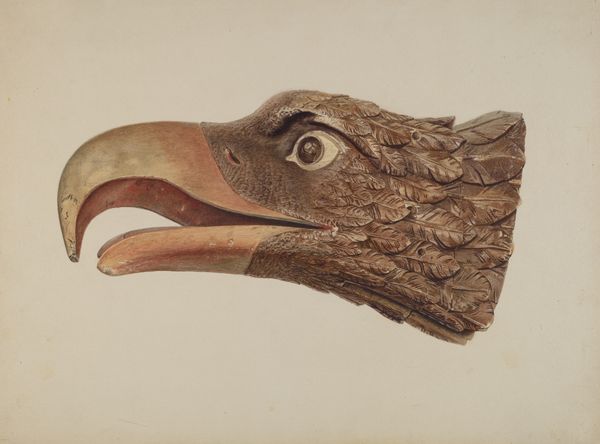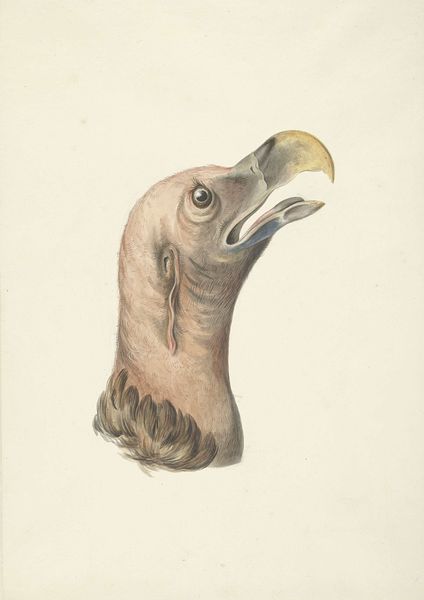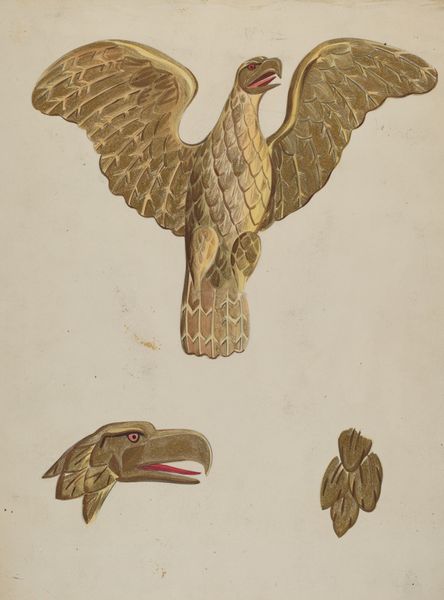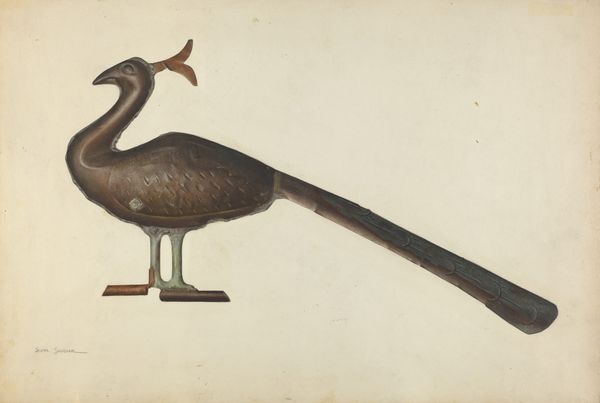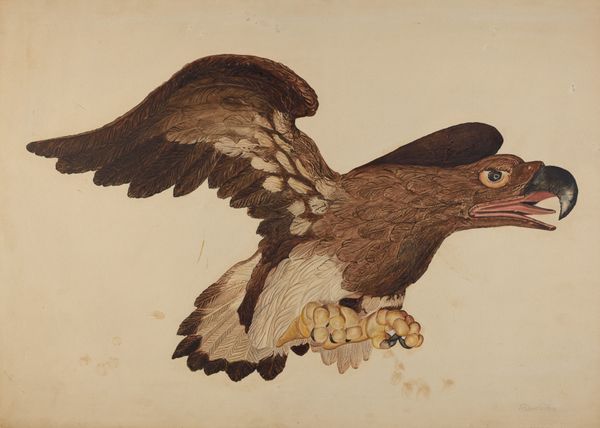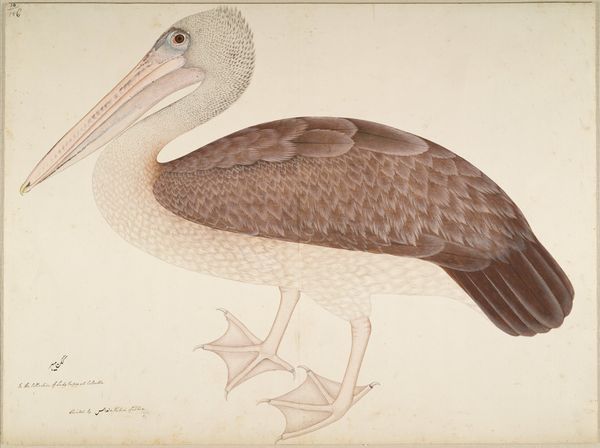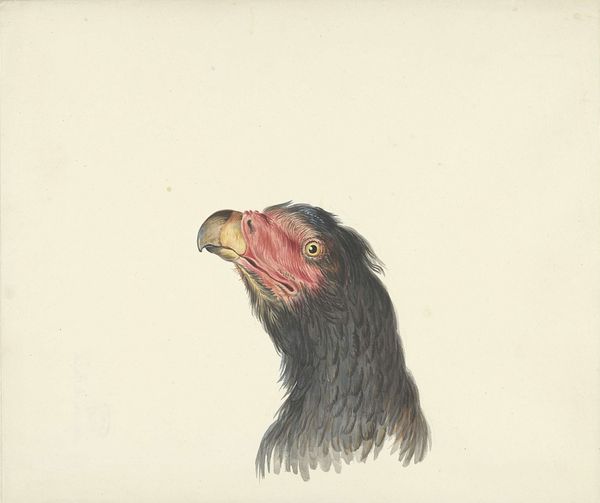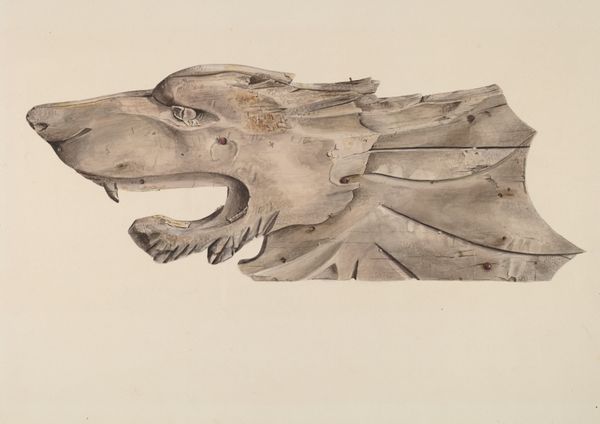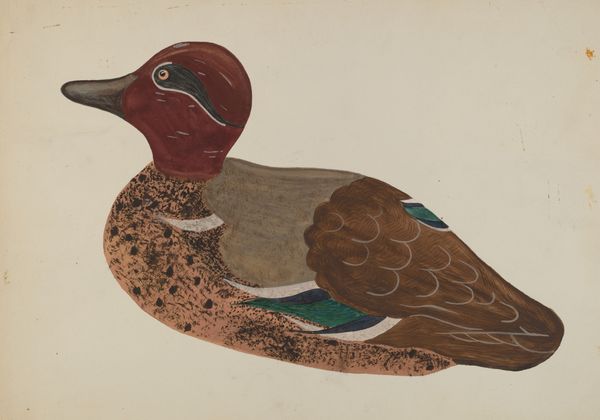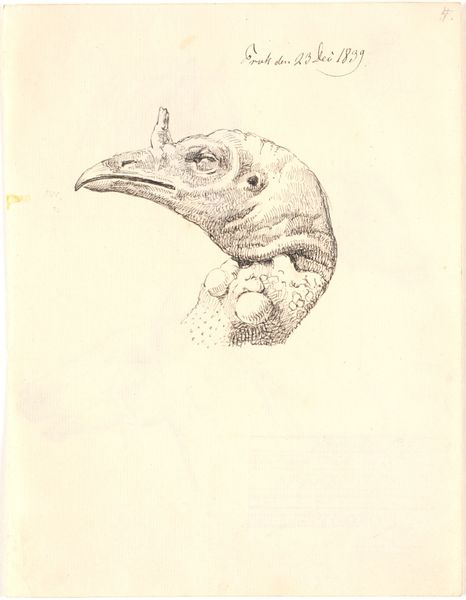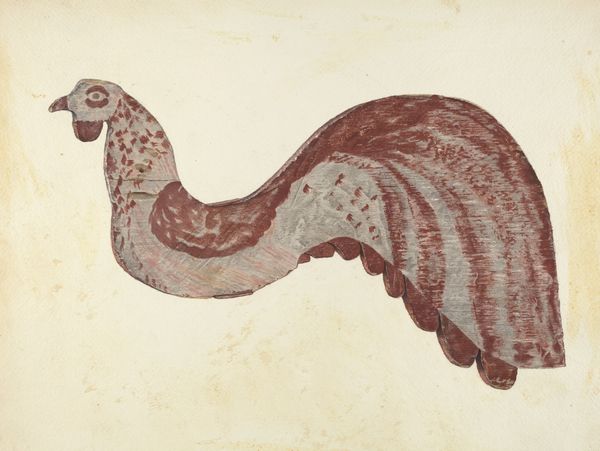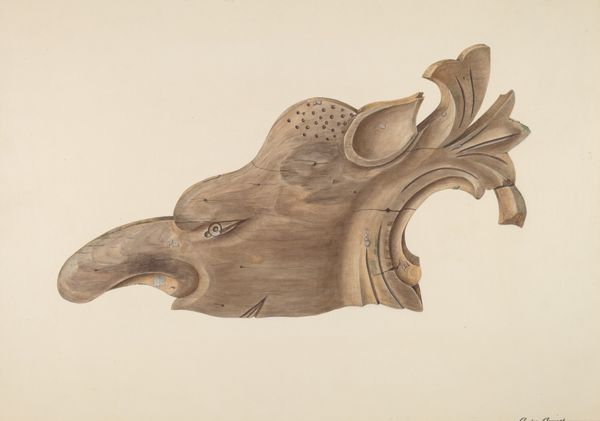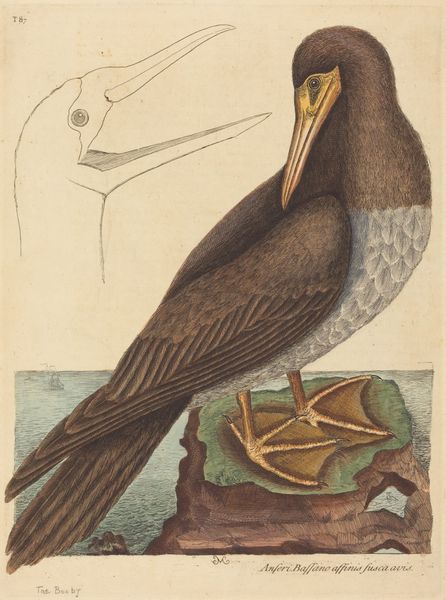
drawing, watercolor
#
drawing
#
charcoal drawing
#
watercolor
#
geometric
#
animal portrait
#
watercolour illustration
#
watercolor
Dimensions: overall: 27.9 x 38 cm (11 x 14 15/16 in.)
Copyright: National Gallery of Art: CC0 1.0
Editor: So, this is "Figurehead" by Jerome Hoxie, created in 1938, using watercolor and charcoal. I'm immediately struck by the intensity of the eagle's gaze; it feels very imposing. How do you interpret this work? Curator: I see this piece as existing within a complicated historical and cultural context. Think about the 1930s: the Dust Bowl, the rise of fascism in Europe, anxieties about American identity. The eagle, as a national symbol, takes on added weight during this period. How might its representation here—so meticulously rendered yet undeniably stylized—speak to those anxieties and the ongoing negotiations of power and identity? Editor: That's interesting. I hadn't considered the political climate. Do you think Hoxie was making a statement about American power? Curator: Perhaps, or perhaps he's probing at the very foundations of that power. Consider the history of figureheads themselves. They're often symbolic protectors of ships, promising safe passage. But they also represent a kind of aggressive projection of dominance, right? Now, knowing that this is a drawing, and not, say, an actual carved figurehead changes the reading. What do you make of that? Editor: That it’s a representation *of* a symbol… creating another layer of distance, and perhaps, critique? It invites a conversation rather than declares an assertion. Curator: Precisely! And the choice of watercolor and charcoal softens the image somewhat, almost making it vulnerable. Consider the legacy of colonialism and the ways in which symbols like the eagle have been used to justify violence and oppression. Seeing it now through this lens, does that change your initial reaction? Editor: It definitely does. I now see the eagle as not just imposing, but also potentially fraught with the burden of that history. Curator: It is in that tension, between the symbol and its historical weight, that this piece truly resonates for me. Editor: This makes me appreciate how art acts as a reflection of its surrounding cultural landscape.
Comments
No comments
Be the first to comment and join the conversation on the ultimate creative platform.
